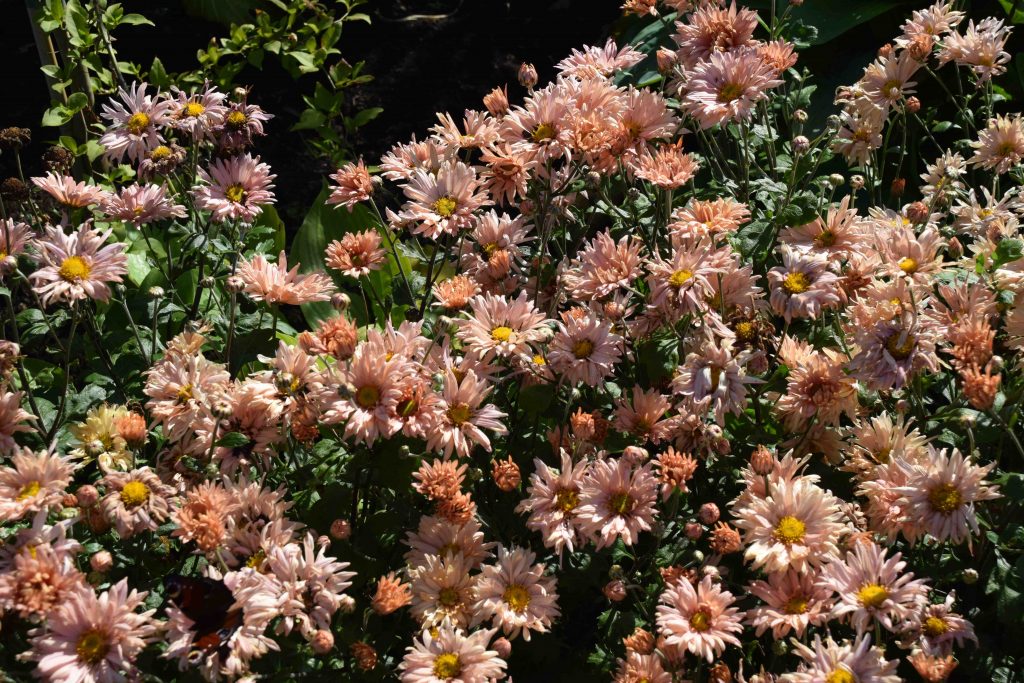
As nights lengthen and get cooler, thoughts turn to chrysanthemums. In fact, you may have had them in bloom for many weeks in your garden because they are a varied and quite confusing bunch of plants. But most people can recognise them and, if they are in doubt, a squeeze and sniff of the leaves usually identifies the plants.
The traditional, hardy kinds, that flowers from August onwards and can be left very much to their own devices (above) are commonly called Koreans. These are sold among the herbaceous plants and are good garden plants. So far, so simple.
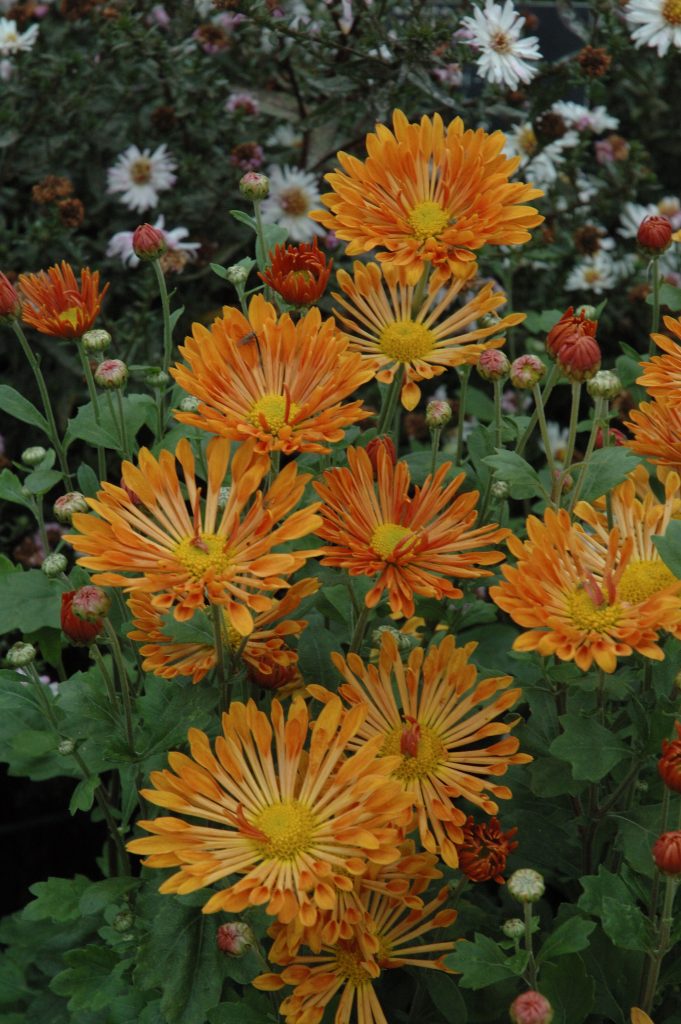
Much of the rest, mostly tall and grown for their flowers, often for cutting, are divided by flowering time.
The most important group, from the point of view of the horticultural trade is concerned, are the late-flowering or greenhouse chrysanthemum. These are more or less hardy but they open their flowers so late that they would be damaged by late autumn cold and wet. In some ways chrysanthemums are like the hens of the flower world, so ubiquitous and easily manipulated. Chrysanthemums flower according to day length and will not form flower buds unless daylight length is short. Growers manipulate this and grow them so they can ‘black out ‘ the greenhouses in the afternoon to trigger flower bud production so they can be produced all year round, either as cut flowers or as pot plants.
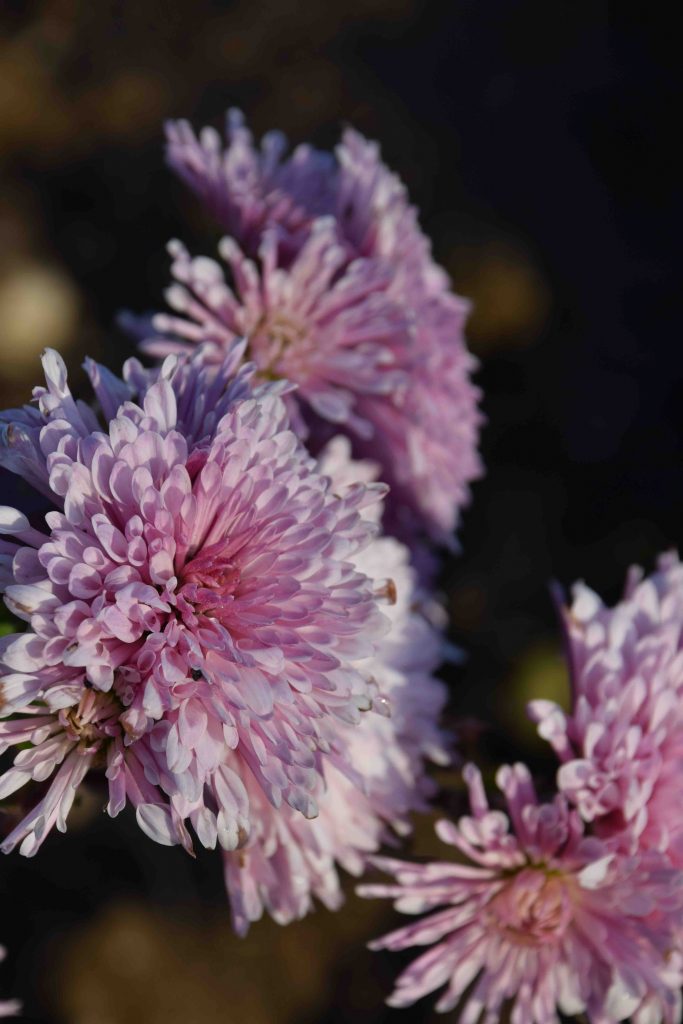
When I was working at Knights pots of chrysanthemums were about the only flowering pot plant that we could sell all year, they are now largely replaced by orchids! A selling point of these was that they could be planted in the garden afterwards but it is (was) never very satisfactory. The resulting plants grew as they naturally will, to 1m or more high and did not bloom till late autumn.
We grew lots of ‘Late’ chrysanthemums at Nags Hall, for cut flowers. We did not have the ability to black out the plants and they flowered at their natural time, in late autumn and up till Christmas, when the white blooms were especially popular.
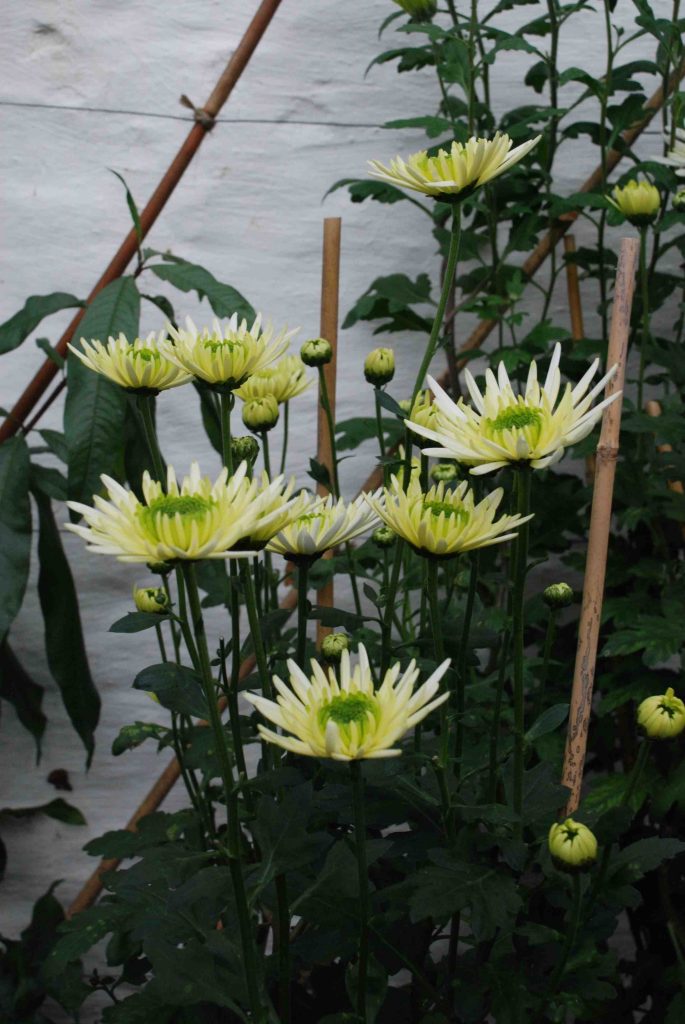
Then along came the ‘cushion mums’ which are a remarkable feat of breeding. According to the series, they can bloom from early to late autumn and they are usually sold as massive domes of buds and blooms, in large pots. Just pop them into your patio pot and you can be sure of a month or more of glorious colour. Unlike the plants sold for household colour, these are naturally dwarf and they will repeat the performance the next year. Most are just thrown away after flowering but you can keep them.
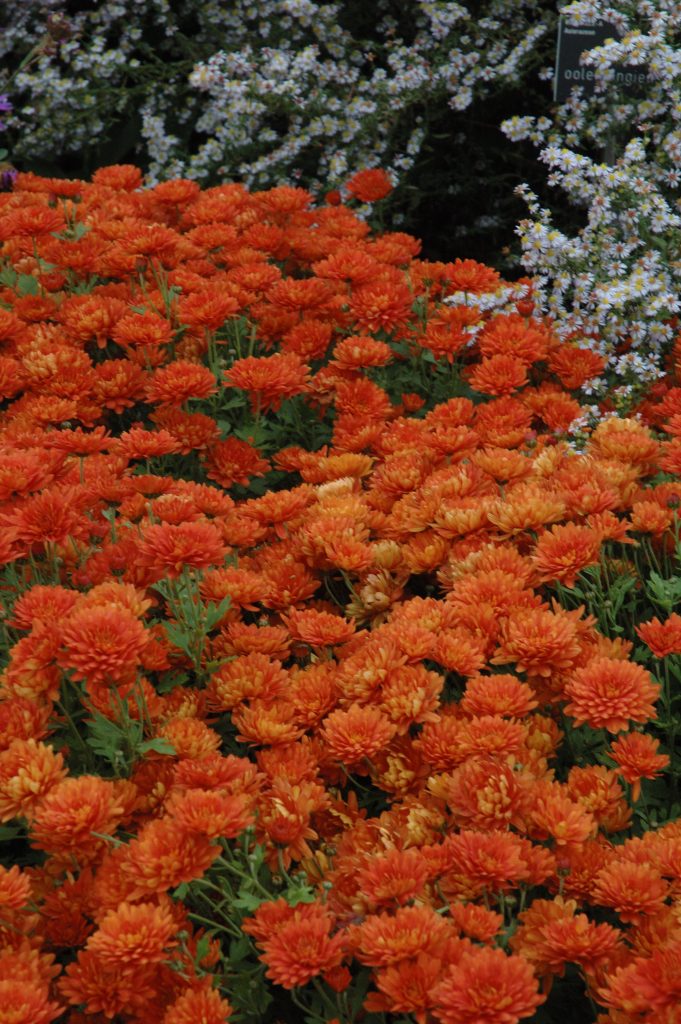
The best way is to protect them in a greenhouse and take cuttings in spring but you could leave them outside. They will be more likely to survive if the soil is well drained and if you make sure slugs do no munch off the new shoots. Cut off the old shoots in winter. In spring you can leave them to grow but if you can divide them, so the shoots are not too crowded, you will get better plants. The question is, do you want a rather plain green lump of leaves in the border all summer until they bloom in autumn.
Jobs for the week
Make a leaf bin
Leaves will soon be dropping from the trees and these make a valuable soil conditioner when decomposed. The simplest way to do this is to make a leaf bin. All you need is a roll of chicken wire about 1m high. Cut a section about 3m long, depending on how much room you have for the bin and make it into a cylinder with a few cable ties. Then just fill it with leaves. Adding some lawn mowings will add soft, nitrogen-rich material that will speed up the decomposition. Or you can add some hoof and horn or dried blood to feed the bacteria. A bin 1m across is just about perfect so the centre can get nice and hot and decompose quickly and kill pesky weed seeds. By spring the heap will be a third of the height and the contents can be used as a mulch – leave till autumn for finer compost to dig in.
Plant trees
Autumn is the best time to plant most hardy plants and that includes trees. Think about what tree would look good in your garden. I have started with the toughest trees in my own garden, because it is rather exposed. So birches (betula) were my first choice. And in rather wet corners I chose Alders (Alnus). Crab apples (malus) are good for small gardens and are attractive both in spring and autumn. Amelanchiers are a good choice for small gardens too, with pretty spring flowers and brilliant autumn colour.
Get the site for your new tree ready by digging a nice big hole and mixing in organic matter with the soil. And don’t forget the tree stake and tie.